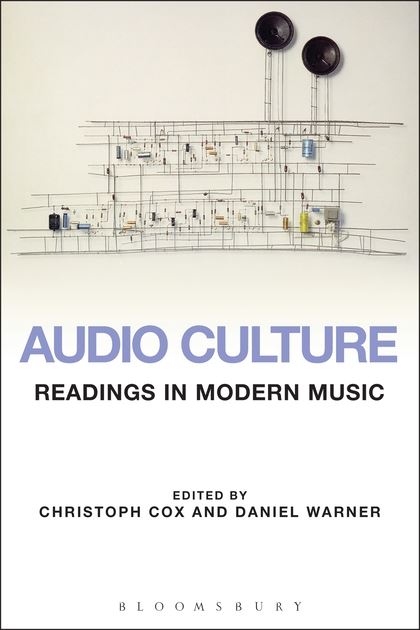Book Review: Audio Culture - Readings in Modern Music

Introduction
Recently, for my podcast, I interviewed Christoph Cox, a philosophy/sound art academic. During that discussion he mentioned one of his texts: Audio Culture – Readings in Modern Music. I was immediately thrown back to my Master’s studies, where Professor Trace Riddell pointed to this book as a door-opener for understanding the place of sound in art. It was a thrilling read for me; to that point, so much of my music focus was about the ‘how’ – scales, harmony, percussion phrasing, stylistic specifics. But this book opened the ‘why’ for me: Why are we drawn to produce sound and music? What does it do to/for us? It completely changed how I interact with both sound design and music composition.
What It Is
What kind of book would have this kind of effect? One that speaks to the history of sound arts, and the breadth of people that obsess about sound. Featuring small excerpts from theses, publications and even album covers, this book is a collection of the “best of” writing on sound that was available as of the publishing of this book. The excerpts come from sources as widely-arrayed as Luigi Russolo, Glenn Gould, Brian Eno and John Oswald.
Discussing everything from the simplest concepts to the most technical achievements, Audio Culture reveals its core concept in onion-like fashion: one layer at a time, with each layer taking you a little closer to the core. The book’s organization is also very welcoming - it is broken into two major themes: Theories and Practices. The first group (Theories) includes Music/Noise, Modes of Listening and Music in the Age of Electronic (Re)production. The second, Practices, touches on many music production themes, including Experimental Music, Minimalism, DJ Culture and more. Regardless of how you view sound design and music-making, you will find interesting information that can influence your work.
Why It Is Important
It is too easy for us, as tech-savvy musicians, to spend our time working through production details: product manuals, books on programming or biographies of our favorite artists. But taking the opportunity to think more deeply about the essence of music can lead us toward new and more artistic approaches. Given the editors’ background in Sonic Art, it makes sense that this book would transcend music and open the door to sound as a framework for art.
In many cases – especially cases where music/art technology is in play – subject-specific books can age poorly. Think about how useful a book on Ableton Live 4 would be: not very useful, right? This book, released the same year as Live 4, remains a vital and even exciting read, and will probably remain so for the long term. By avoiding currency and being well-curated, this collection of essays is an amazing resource for both education and inspiration.
A new edition of this book, with many new essays (including 4 newly-commissioned works) is going to be coming out in July. (You can check out more about this 2nd edition.) But the current edition has material that will be removed in the upcoming edition – making this one useful to the sonic explorer as well.
Conclusion
If you aren’t steeped in academic reading material, you might find a book like Audio Cultures to be a difficult hill to climb: some of the discussion is wordy, and the vocabulary can be intense. But this also isn’t a novel, so there is no advantage to reading it quickly. Treated like a ‘devotional’, reading just one or two essays (or even a portion of one of the longer ones…) each day, you should find this to be an eye-opening and mind expanding way to change your views on sound, music and creativity.
by Darwin Grosse on May 16, 2017

